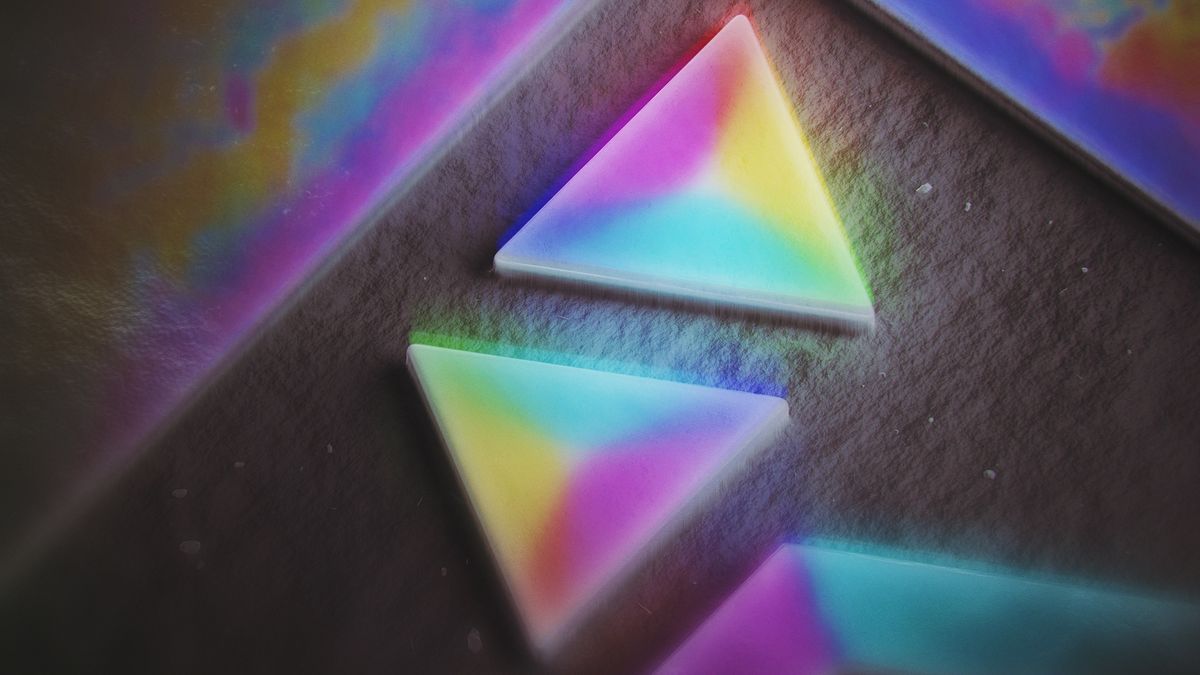Researchers have obtained the first conclusive evidence of an elusive third class of magnetism, called altermagnetism. Their findings, published Dec. 11 in the journal Nature, could revolutionize the design of new high-speed magnetic memory devices and provide the missing puzzle piece in the development of better superconducting materials.
“We have previously had two well-established types of magnetism,” study author Oliver Amin, a postdoctoral researcher at the University of Nottingham in the U.K., told Live Science. “Ferromagnetism, where the magnetic moments, which you can picture like small compass arrows on the atomic scale, all point in the same direction. And antiferromagnetism, where the neighboring magnetic moments point in opposite directions — you can picture that more like a chessboard of alternating white and black tiles.”
Electron spins within an electrical current must point in one of two directions and can align with or against these magnetic moments to store or carry information, forming the basis of magnetic memory devices.
A new form of magnetism
Altermagnetic materials, first theorized in 2022, have a structure that sits somewhere in between. Each individual magnetic moment points in the opposite direction as its neighbor, as in an antiferromagnetic material. But each unit is slightly twisted relative to this adjacent magnetic atom, resulting in some ferromagnetic-like properties.
Altermagnets, therefore, combine the best properties of both ferromagnetic and antiferromagnetic materials. “The benefit of ferromagnets is that we have an easy way of reading and writing memory using these up or down domains,” study co-author Alfred Dal Din, a doctoral student also at the University of Nottingham, told Live Science. “But because these materials have a net magnetism, that information is also easy to lose by wiping a magnet over it.”
Related: ‘A force more powerful than gravity within the Earth’: How magnetism locked itself inside our planet
Conversely, antiferromagnetic materials are much more challenging to manipulate for information storage. Because they have a net zero magnetism, however, information in these materials is much more secure and faster to carry. “Altermagnets have the speed and resilience of an antiferromagnet, but they also have this important property of ferromagnets called time reversal symmetry breaking,” Dal Din said.
This mind-bending property looks at the symmetry of objects moving forward and backward in time. “For example, gas particles fly around, randomly colliding and filling up the space,” Amin said. “If you rewind time, that behavior looks no different.””
This means the symmetry is conserved. However, because electrons possess both a quantum spin and a magnetic moment, reversing time — and, therefore, the direction of travel — flips the spin, meaning the symmetry is broken. “If you look at those two electron systems — one where time is progressing normally and one where you’re in rewind — they look different, so the symmetry is broken,” Amin explained. “This allows certain electrical phenomena to exist.”
Finding ‘the missing link’ of superconductivity
The team — led by Peter Wadley, a professor of physics at the University of Nottingham — used a technique called photoemission electron microscopy to image the structure and magnetic properties of manganese telluride, a material formerly believed to be antiferromagnetic.
“Different aspects of the magnetism become illuminated depending on the polarization of the X-rays we choose,” Amin said. Circularly polarized light revealed the different magnetic domains created by the time reversal symmetry breaking, while horizontally or vertically polarized X-rays allowed the team to measure the direction of the magnetic moments throughout the material. By combining the results of both experiments, the researchers created the first-ever map of the different magnetic domains and structures within an altermagnetic material.
With this proof of concept in place, the team fabricated a series of altermagnetic devices by manipulating the internal magnetic structures through a controlled thermal cycling technique.
“We were able to form these exotic vortex textures in both hexagonal and triangular devices,” Amin said. “These vortices are gaining more and more attention within spintronics as potential carriers of information, so this was a nice first example of how to create a practical device.”
The study authors said the power to both image and control this new form of magnetism could revolutionize the design of next-generation memory devices, with increased operational speeds and enhanced resilience and ease of use.
“Altermagnetism will also help with the development of superconductivity,” Dal Din said. “For a long time, there’s been a hole in the symmetries between these two areas, and this class of magnetic material that has remained elusive up until now turns out to be this missing link in the puzzle.”
